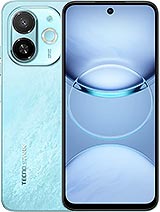Lava Shark 5G alternatives
Tap above to see alternatives.
Oppo Reno14 alternatives
Tap above to see alternatives.
Lava Shark 5G

Lava Shark 5G
-
Unisoc T765
6 nm
-
5000 mAh
18W
-
6.75"
720 x 1612 pixels
-
13 MP
1080p@30fps
-
Specs

Oppo Reno14

Oppo Reno14
-
Dimensity 8350
4 nm
-
6000 mAh
80W
-
6.59"
1256 x 2760 pixels
-
50 MP
4K@30/60fps
-
Specs

2.3 GHz, Dual core, Cortex A76
2.1 GHz, Hexa Core, Cortex A55
1x3.35 GHz Cortex-A715
3x3.20 GHz Cortex-A715
4x2.20 GHz Cortex-A510
12GB 256GB (UFS 3.1)
12GB 512GB (UFS 3.1)
(wide), AF
Sony LYT 600, f/1.8, 26mm (wide), 1/1.95", PDAF, OIS
50 MP
f/2.8, 80mm (telephoto), PDAF, OIS, 3.5x optical zoom, upto 120x Digital Zoom
8 MP
f/2.2, 15mm, 116˚ (ultrawide), 1/4.0", 1.12µm, AF
1080p@30/60/120fps
f/2.0, 21mm (wide), 1/2.75", AF
1080p@30/60fps, gyro-EIS, HDR
SIM1: Nano, SIM2: Nano
SIM1: Nano, SIM2: eSIM
7 5G bands
n1, n5, n8, n28, n40, n77, n78
16 5G bands
n1, n2, n3, n5, n7, n8, n12, n20, n26, n28, n38, n40, n41, n66, n77, n78
In this performance comparison, the Oppo Reno14 with its Mediatek Dimensity 8350 (4nm) performs better than the Lava Shark 5G with the Unisoc Unisoc T765 (6nm), thanks to superior chipset efficiency.
Oppo Reno14 offers 3 years of OS updates, while Lava Shark 5G does not have confirmed OS update information. Oppo Reno14 receives 4 years of security updates, while Lava Shark 5G does not have confirmed security update information.
Oppo Reno14 features a superior AMOLED display, while Lava Shark 5G comes with an LCD panel. In terms of smoothness, Oppo Reno14 offers a higher 120 Hz refresh rate, ensuring fluid scrolling and animations. Both devices deliver the same brightness level at nits. Notably, Oppo Reno14 offers a higher screen resolution, resulting in sharper visuals and more detailed content.
Oppo Reno14 features a larger 6000 mAh battery, potentially delivering better battery life. Oppo Reno14 also supports faster wired charging at 80W, compared to 18W on Lava Shark 5G.
Oppo Reno14 offers better protection against water and dust with an IP69 rating.
- Lava Shark 5G – Check price here
- Oppo Reno14 – Check price here
¹ Scores can vary even with the same chipset due to RAM, thermals, and software optimization.










